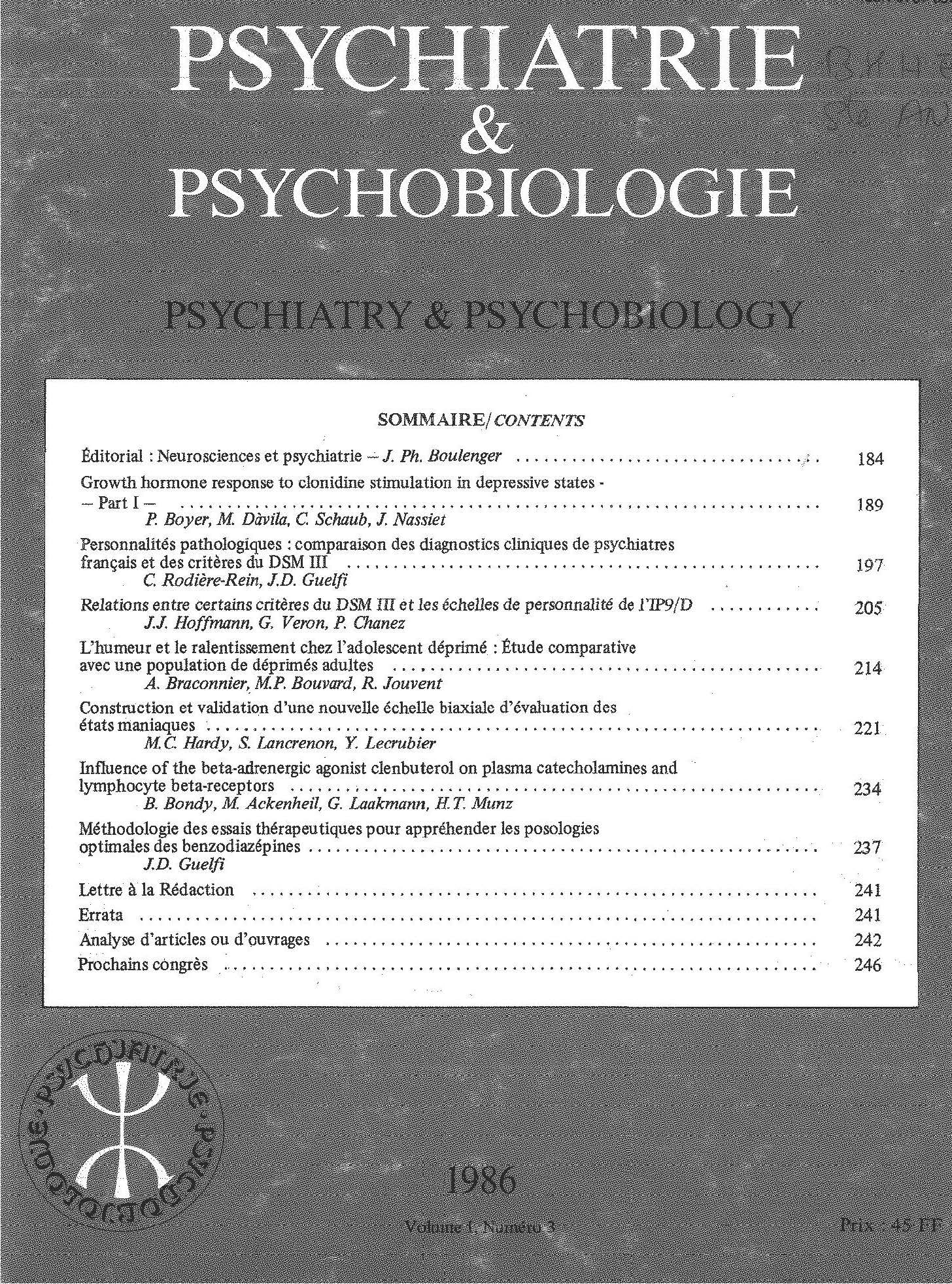No CrossRef data available.
Article contents
Anxiété et Programme D’action
Published online by Cambridge University Press: 28 April 2020
Résumé
Les expressions cliniques de l’anxiété sont diverses et assez indépendantes les unes des autres. Les causes sont également diverses, en partie psychologiques et sociales, en partie organiques. La classification nosologique prête à discussion. Comment pouvons-nous maintenir notre intuition forte que l’anxiété est un processus bien particulier au regard de ces données hétérogènes?
L’idée que l’anxiété réalise un comportement de peur est commune aux traditions phénoménologique, psychanalytique et behavioriste. Une des raisons de la diversité des données empiriques tient pourtant au fait qu’il n’y a pas de comportement spécifique à l’anxiété.
Celle-ci doit être décrite à la fois comme une interruption des plans d’actions du sujet (ce qui est commun a toutes les émotions) et comme l’absence de tout plan d’action qui pourait répondre à la situation (contrairement aux autres émotions).
On peut, à partir de là, décrire l’anxiété comme un processus cyclique. A l’occasion d’une interruption primaire de tout programme d’action s’établirait une réponse d’éveil autour du système nerveux autonome (autonomic arousal) et du système nerveux central (réaction d’orientation). Aucune action spécifique ne peut être produite. Il en résulte soit des actions de substitut (phobies, obsessions, agressivité) qui échouent partiellement à arrêter le processus, soit un état de vide cognitif qui entretient le processus d’inhibition. Ce modèle explique la diversité des «entrées» étiologiques et celle des cibles d’action des différentes thérapeutiques.
En effet, on peut montrer que l’on entre dans le cycle de l’anxiété par l’une quelconque de ces étapes. De même, les thérapeutiques psychologiques et médicamenteuses agissent sur des processus qui sous-tendent ces étapes.
Summary
The clinical expressions of anxiety are varied and independent. The causes are also varied; partly psychological and social, partly organic. The nosological classification of anxiety tends itself to discussion. How can we maintain strongly our intuition that anxiety is a specific process, in light of the data describing its heterogeneity?
The notion that anxiety gives rise to a behavior of fear is common to phenomenological, psychoanalytical and behavioristic traditions. One of the reasons for the diversity of empirical data, however, is that anxiety is not characterized by any one specific behavior.
Anxiety must be described as an interruption of the patient's pian of action (common to all psychological States) and, at the same lime, as the absence of any plan of action that could respond to the situation (this absence of planning is in contrast to other psychological States). On that basis, anxiety can be described as a cyclical problem. when there is a primary interruption of a program of action, there will be an arousal response involving the autonomic nervous System (autonomic arousal) and the central nervous System (orientation reaction). No specific action can occur. The result is either substitute actions (phobias, obsessions, aggressiveness) that partly fail in arresting the anxiety process, or a cognitive vacuum that sustains the inhibition process. This model explains the diversity of etiologies and the variety of behaviors that therapies seek to modify. Indeed, it can be shown that the anxiety cycle may be interrupted at any stage. Likewise, the psychological and pharmacological therapies ad on the process that underlies these stages.
- Type
- Research Article
- Information
- Psychiatry and Psychobiology , Volume 3 , Issue S2: Aspects cliniques et cognitifs de l'anxiété Paris, 28 Janvier 1988 , 1988 , pp. 155s - 159s
- Copyright
- Copyright © European Psychiatric Association 1988



Comments
No Comments have been published for this article.